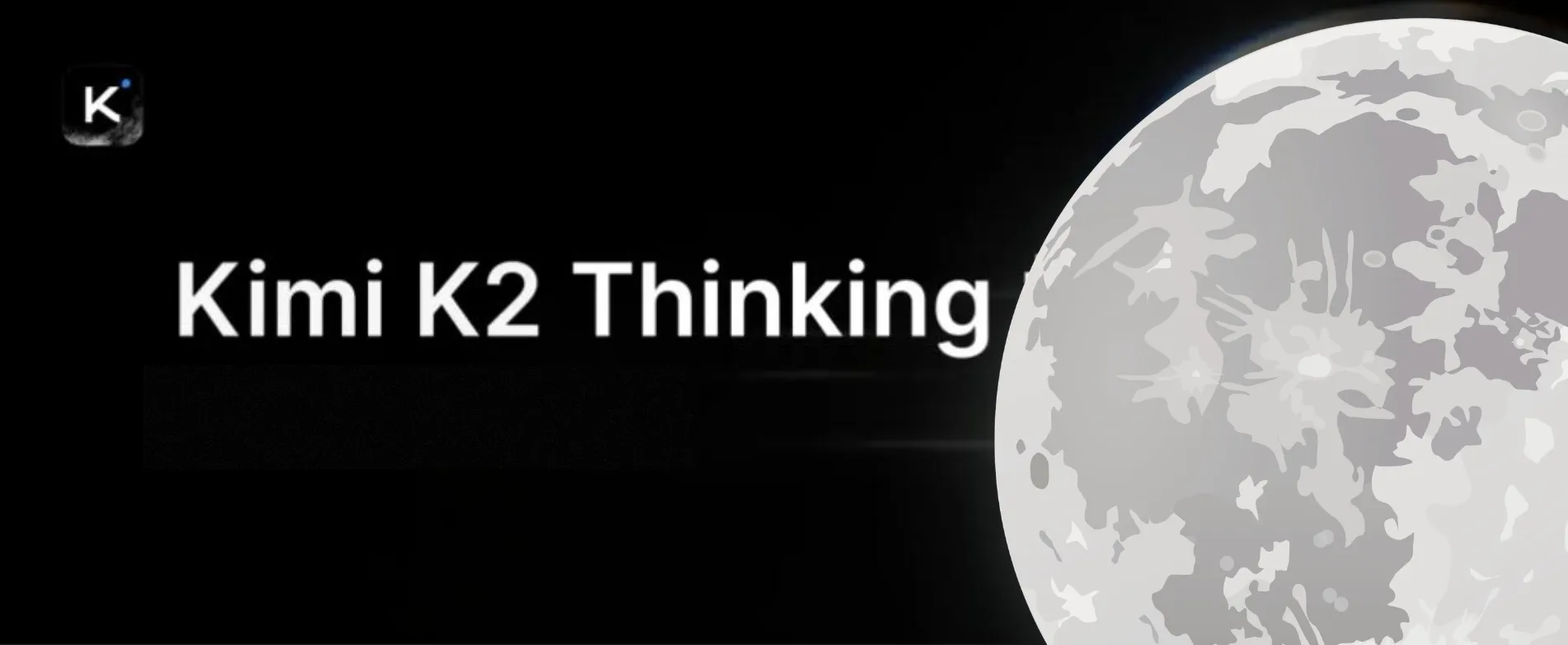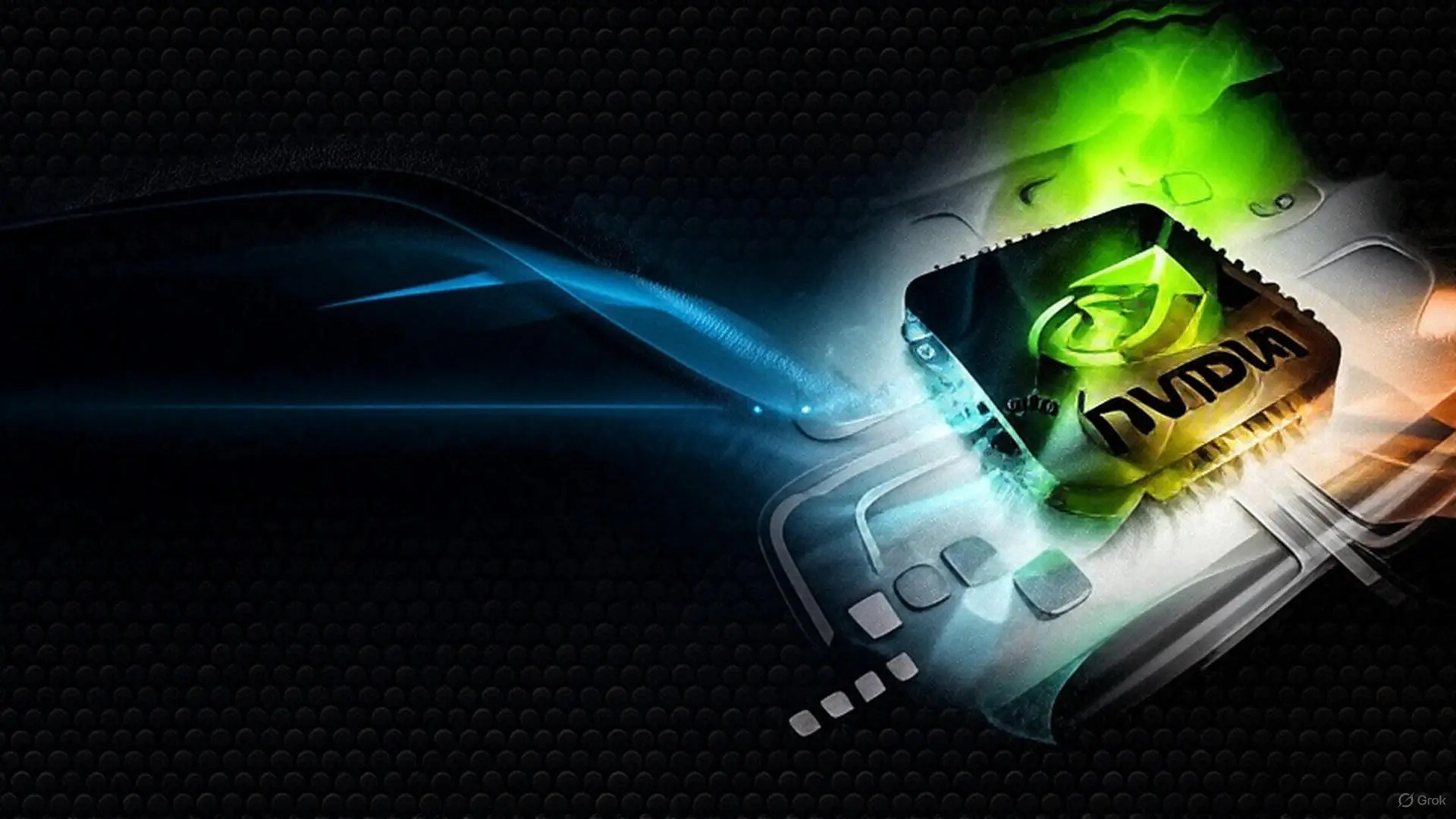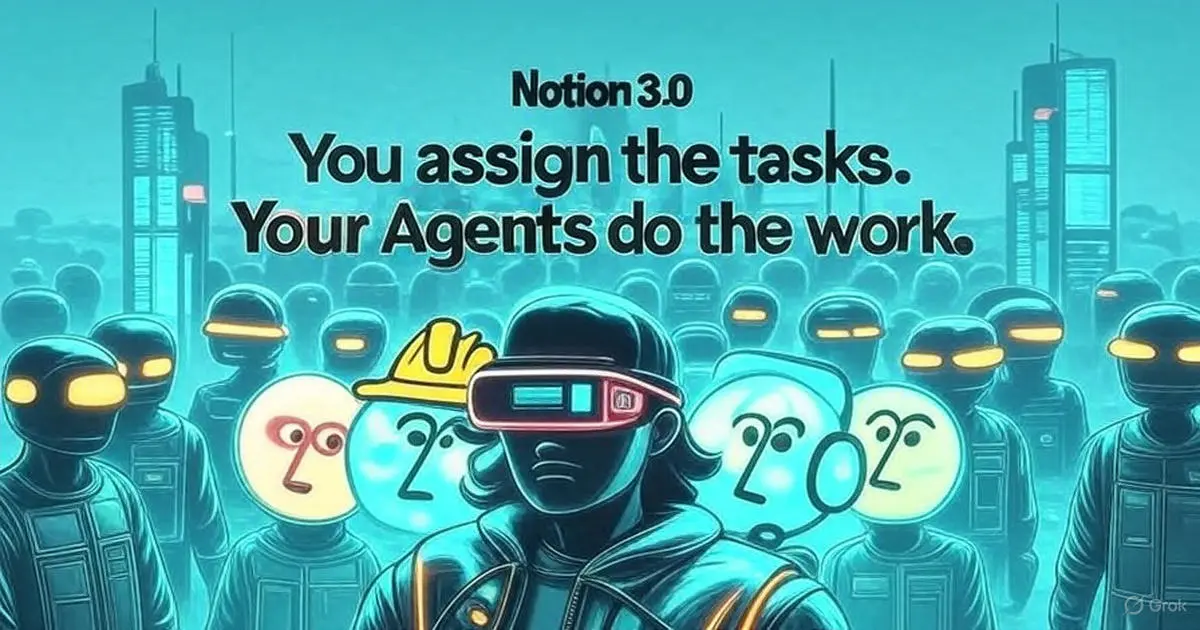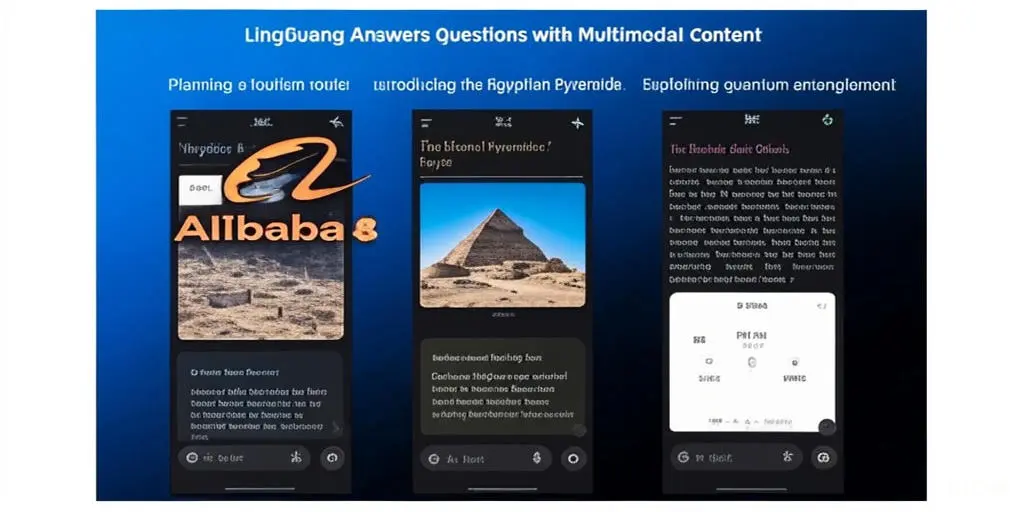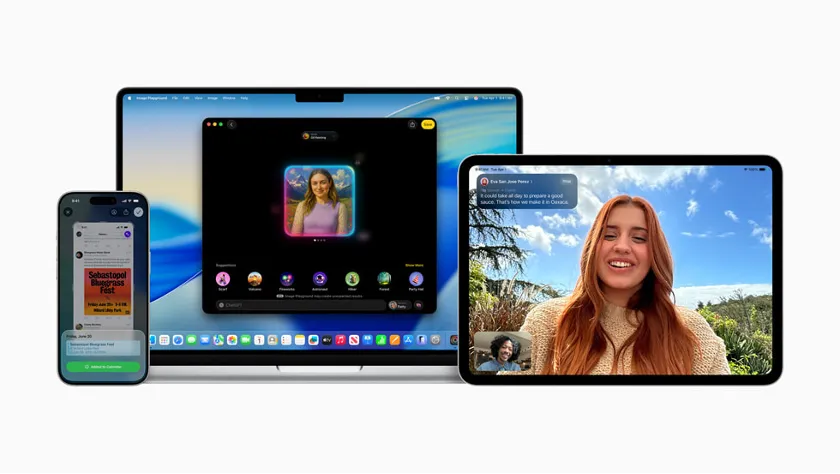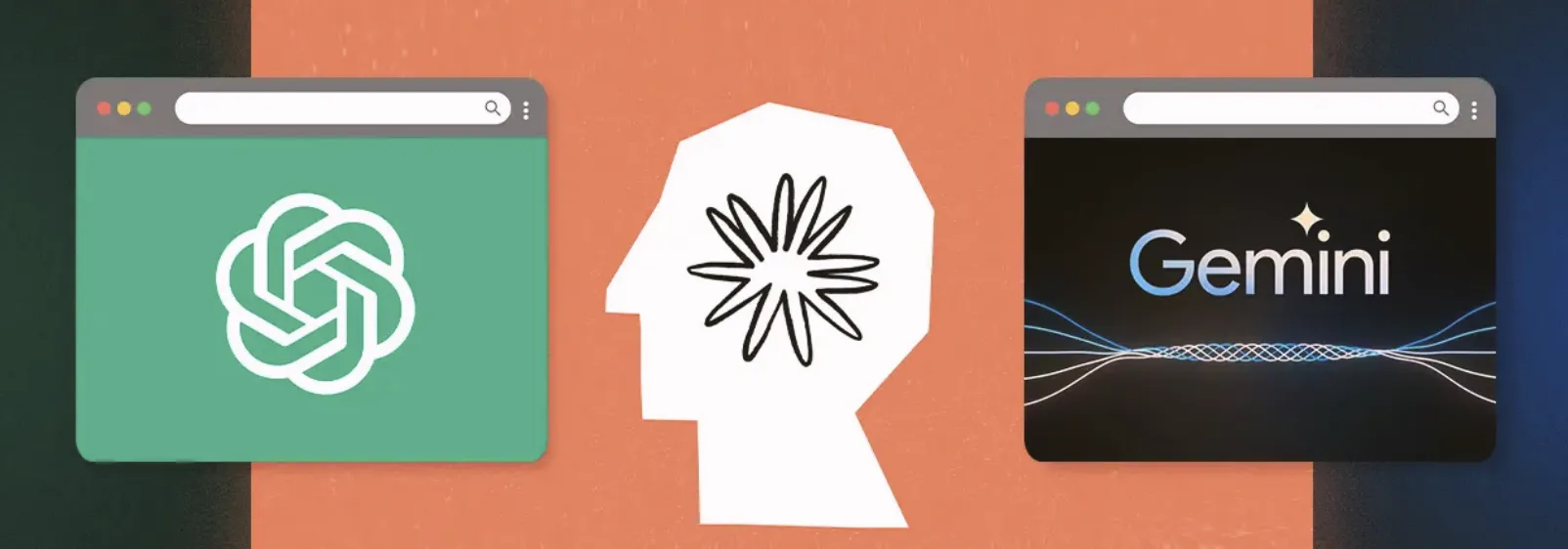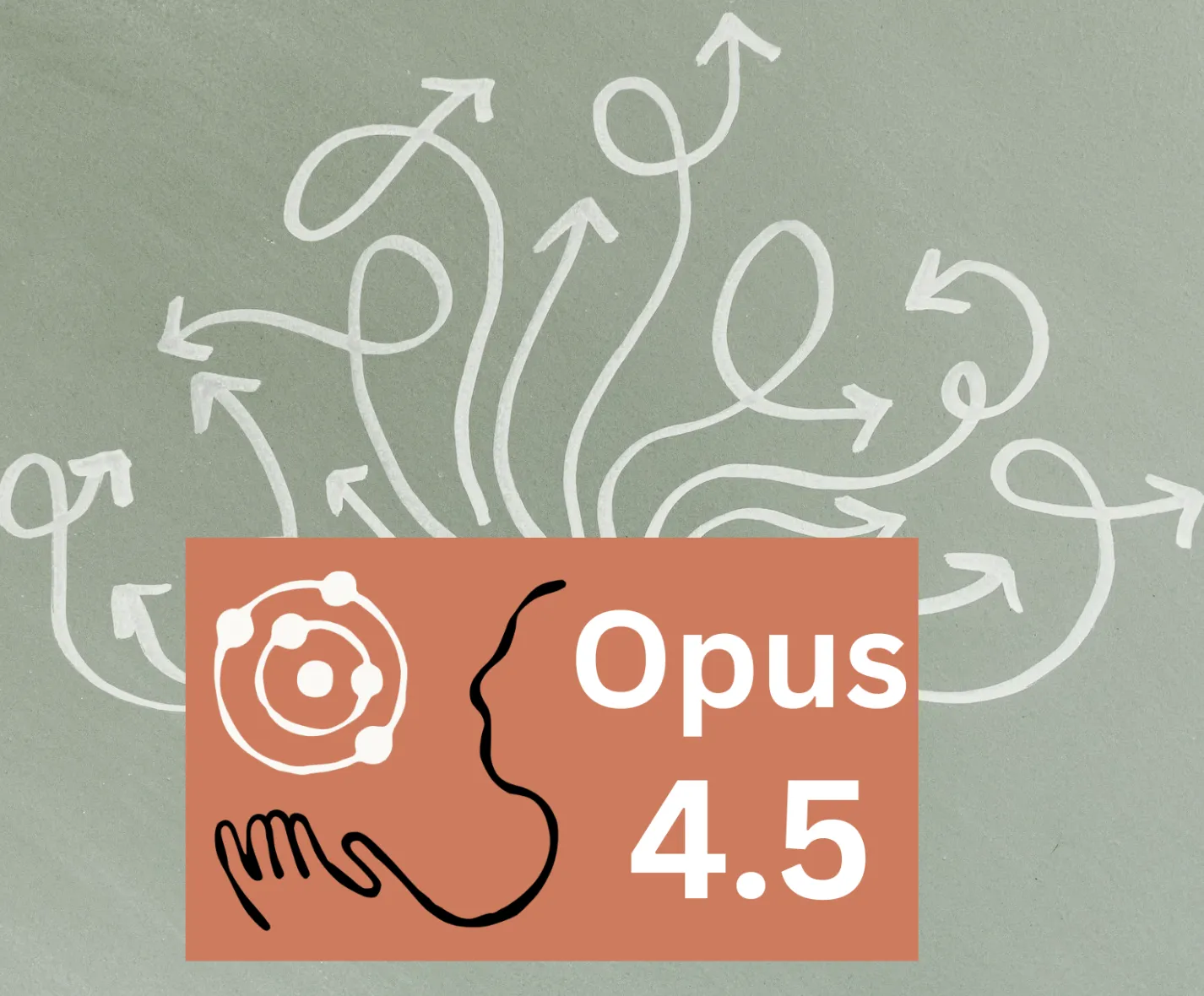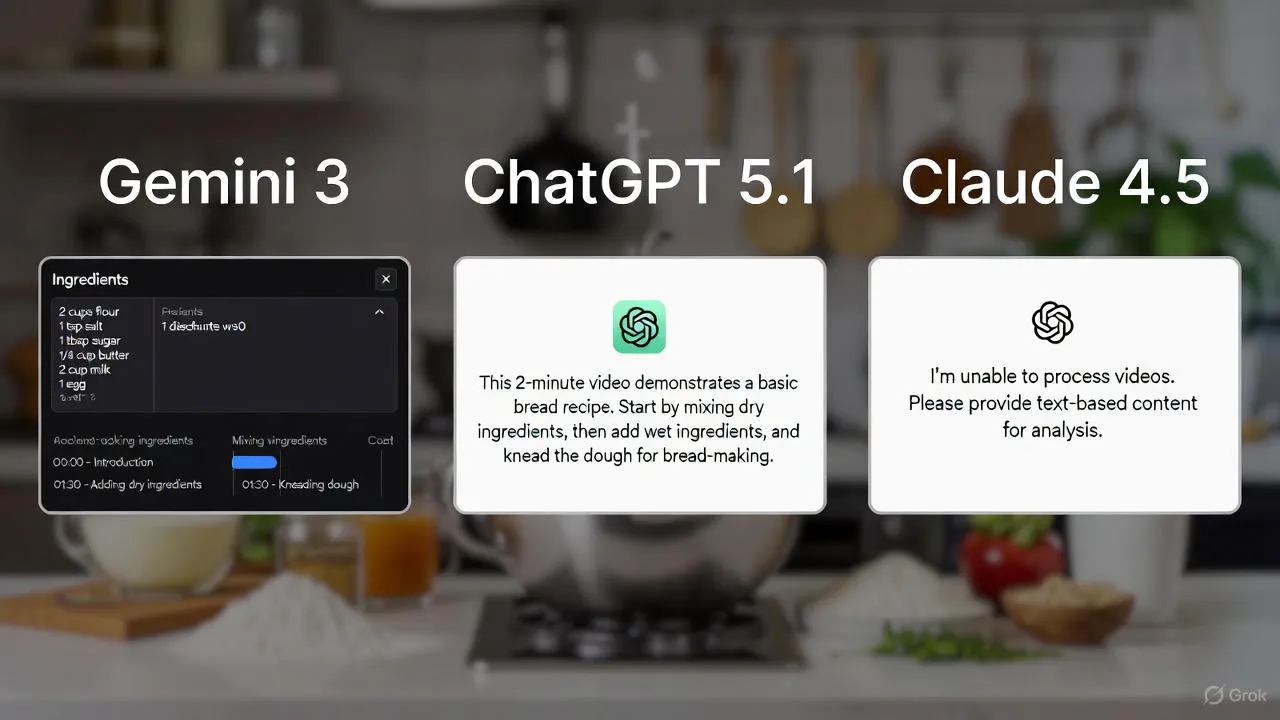From Grok 1 to Grok 5: xAI’s AI Infrastructure and Model Evolution

Author: Boxu Li
xAI’s Grok has rapidly evolved from an edgy chatbot on X to a frontier-scale AI platform. This deep dive looks at how Grok’s underlying infrastructure and model capabilities have progressed through Grok-1, 2, 3, and 4 – and what we can expect from the upcoming Grok-5.
What Is xAI Grok? A Quick Recap
Grok is the flagship large language model (LLM) family developed by Elon Musk’s AI startup xAI. It started in late 2023 as a consumer-facing chatbot on X (formerly Twitter) with a bit of a rebellious, witty personality. What made Grok immediately stand out was its real-time awareness – unlike most LLMs with stale training data, Grok was tightly integrated with X’s live feed and could perform web searches on the fly[1]. In practice, Grok is a hybrid between an LLM and a live data agent: it can pull the latest information from X posts and the web, then incorporate those facts with citations in its responses[1]. This “Hitchhiker’s Guide to the Galaxy” style bot was willing to answer almost anything (even “spicy” questions other AI might refuse), which attracted attention – and some controversy – for its unfiltered approach.
Under the hood, Grok is not a single model but a family of models and tools. Early on, xAI open-sourced the base Grok-1 model (a massive 314B-parameter network) under an Apache-2.0 license, signaling an unusually open strategy. Since then, xAI has iterated quickly: Grok-1.5 added long context and multimodal vision, Grok-2 improved speed and multilingual support, Grok-3 introduced explicit reasoning modes, and Grok-4 (and 4 “Heavy”) pushed into multi-agent territory with tool use and cooperative sub-agents. Grok can now be accessed via the Grok chatbot on X, through the xAI API, and even through cloud platforms (Oracle Cloud lists Grok-4 as a first-class model offering[2][3]). In short, Grok has evolved from a single edgy chatbot into an entire AI stack – a stack centered on truth-seeking, real-time integration, and heavy-duty reasoning.
Inside Grok’s Infrastructure: Colossus Supercomputer and JAX+Rust Stack
Behind Grok’s chatty front-end lies one of the world’s most powerful AI supercomputers. Colossus – xAI’s GPU mega-cluster in Memphis, Tennessee – was built to train and run Grok at frontier scale. Announced in mid-2024 and dubbed the “Memphis Supercluster” by Musk, Colossus was designed for up to 100,000 NVIDIA H100 GPUs connected via a single high-bandwidth RDMA fabric. In Musk’s words, “It’s the most powerful AI training cluster in the world!”. The data center housing Colossus is a 150 MW facility that was constructed in just 122 days – an achievement so fast that it garnered media attention and even a ServeTheHome video tour.

Hardware Design: The basic unit of Colossus is a Supermicro liquid-cooled rack containing 8 servers, each with 8× NVIDIA H100 GPUs (64 GPUs per rack). Every rack also has a coolant distribution unit (CDU) and high-speed network switches, and racks are grouped in pods of 8 (512 GPUs) that form mini-clusters. This homogeneous, modular design makes it easier to scale and manage. All components – GPUs, dual Xeon CPUs, PCIe switches – are liquid cooled, which is essential given the H100’s heat output and the 150MW facility power budget. The networking uses NVIDIA’s Spectrum-X Ethernet fabric and BlueField-3 DPUs to achieve 400 Gbps+ per node, enabling the GPUs across racks to communicate at extreme speeds[4][5]. In short, xAI built Colossus to minimize bottlenecks: fast interconnects, cooling for sustained high utilization, and redundant power/cooling so that no single failure halts training.
Scale and Hybrid Compute: As of mid-2024, xAI had ~32,000 H100s online with plans to ramp to 100k by end of year. They also announced an expansion (“Colossus 2”) with 300,000 next-gen GPUs (NVIDIA B200s) for 2025[6]. Even while building its own datacenter, xAI didn’t rely on just one source of compute: they leased about 16,000 H100 GPUs on Oracle Cloud and tapped AWS and spare X (Twitter) datacenters as well[7]. This hybrid strategy gave xAI the flexibility to start training large models immediately (using cloud GPUs) and then gradually migrate workloads onto their in-house supercomputer. By late 2025, Colossus is reported to include 150,000 H100 GPUs (plus tens of thousands of newer H200 GPUs) as xAI prepared for Grok-4 and beyond.
Software Stack: To harness this hardware, xAI built a custom distributed training framework centered on JAX (Google’s high-performance array and ML library), with a Rust-based orchestration layer running on Kubernetes[8]. In xAI’s own words, “LLM training runs like a freight train thundering ahead; if one car derails, the entire train is dragged off the tracks.” Maintaining high reliability and Model FLOP Utilization (MFU) across thousands of GPUs was a top priority. xAI’s training orchestrator automatically detects and ejects any node that starts acting up (e.g. hardware errors) and can seamlessly restart shards of the job if needed[9]. Checkpointing hundreds of gigabytes of model state is done in a fault-tolerant way so that a single server failure doesn’t wipe out days of progress. Essentially, xAI treated infrastructure as a first-class problem – investing in tooling to keep 10,000+ GPUs busy even when hardware fails or when experimenting with new model architectures. This JAX + Rust + Kubernetes stack gives xAI the ability to scale jobs across the Colossus cluster and iterate rapidly on model variants (as evidenced by how quickly Grok versions have rolled out). It’s a similar philosophy to Google’s TPU-based infrastructure or OpenAI’s software stack, but xAI has tailored it to mix GPU clusters and to emphasize failure resilience.
Grok Model Evolution: Architecture and Capabilities from 1 to 4
Grok-1: A 314B-Parameter Mixture-of-Experts Foundation
The first full version, Grok-1, was introduced in late 2023 as a frontier-class LLM developed in roughly four months. Grok-1’s architecture is a Mixture-of-Experts (MoE) Transformer – essentially a sparse model where different “experts” (sub-networks) handle different tokens. In terms of scale, Grok-1 is enormous: 314 billion parameters in total, with 64 Transformer layers and 48 attention heads. It uses a vocabulary of 131k tokens and an embedding size of 6,144, and the context window in the open release was 8,192 tokens. Only a fraction of those 314B weights are active per token, however. The MoE design means each token passes through a gating network that selects 2 experts (feed-forward modules) out of a large pool, so roughly 1/8th of the parameters might be used for a given input token. This lets Grok-1 achieve the representational capacity of a 300B+ model while only computing the equivalent of ~79B parameters per token – a major efficiency gain in training and inference.
Schematic of a Mixture-of-Experts layer in an LLM. Instead of activating every neuron for every input, an MoE model like Grok-1 uses a gating network to route each token’s data through a small subset of expert networks (sparse activation), then combines the results. This allows massive total parameters without linear growth in compute cost.
Grok-1’s MoE approach was validated by its performance. On release, xAI reported Grok-1 scored 73% on the MMLU knowledge benchmark and 63.2% on HumanEval for coding – outpacing models like OpenAI’s GPT-3.5 and Inflection-1, and second only to GPT-4 in that late-2023 era. Independent tests confirmed Grok-1’s strong math and reasoning skills for its compute class. For example, Grok-1 was able to pass a Hungarian high school math exam with a C grade (59%), matching Anthropic’s Claude 2 (55%) and not far behind GPT-4 (68%) under the same conditions. This was notable because Grok-1 achieved such results with less total training compute than GPT-4, showcasing xAI’s training efficiency.
However, Grok-1 was also resource-hungry. Running the full 314B model in 16-bit precision requires an estimated ~640 GB of VRAM for inference. That kind of footprint means no single server can host it; you need multi-GPU partitioning just to serve the model, and even more GPUs (with data parallelism) to train it. This drove home why xAI built Colossus and why high-speed interconnect is critical – at Grok-1 scale, GPU memory and bandwidth are often the limiting factors. Indeed, AMD’s engineers demonstrated Grok-1 on an MI300X 8-GPU server (the MI300X has 192GB per GPU, one of the few that could handle Grok-1’s memory demands). In short, Grok-1 proved xAI could train a GPT-3.5-class model from scratch, but it also pushed the limits of hardware, necessitating the massive cluster and custom training stack described above.
Grok-1.5: Long Context and Multimodal Vision
xAI didn’t stop at the base Grok-1. In March 2024, they announced Grok-1.5, which brought two major upgrades: a 128,000-token context window and substantial improvements in math and coding prowess. Grok-1.5 still had roughly the same architecture and parameter count as Grok-1 (xAI didn’t disclose new parameter figures, implying it was a refinement of the existing model), but it could handle inputs 16× longer and utilize “scalable oversight” techniques to boost reasoning. Achieving a 128k context is non-trivial – it likely involved new positional encoding schemes and training curricula to ensure the model didn’t forget how to handle short prompts. The result was impressive: Grok-1.5 demonstrated perfect recall of information across the entire 128k window in internal tests[10], and it excelled at “needle in a haystack” tasks where a relevant snippet might be hidden deep in a long document.
Crucially, Grok-1.5’s reasoning and problem-solving jumped a level. On the challenging MATH benchmark (competition-level math problems), Grok-1.5 scored 50.6%, more than double Grok-1’s 23.9%. It hit 90% on GSM8K, a math word-problem set (up from Grok-1’s ~63%). And for code generation, Grok-1.5 reached 74.1% on HumanEval, up from 63%. These gains moved Grok closer to GPT-4’s level on quantitative tasks – in fact, Grok-1.5 reportedly matched or beat Anthropic’s Claude 2 and Google’s PaLM 2 on many benchmark scores. To achieve this, xAI used techniques like chain-of-thought prompting and perhaps incorporated more fine-tuning on code and math data. Grok-1.5 also introduced an “AI tutor” model in the training loop – essentially human and tool-assisted reviewers who generated high-quality reasoning demonstrations to fine-tune Grok’s step-by-step problem solving[11]. This was the beginning of xAI’s focus on tool-assisted oversight, which we’ll see more of in later versions.
In April 2024, xAI pushed the envelope further with Grok-1.5V, a multimodal extension that could process images in addition to text. Grok-1.5V (“V” for vision) took the long-context, math-savvy Grok-1.5 and gave it eyes: it was trained to interpret photographs, diagrams, screenshots, and other visual inputs alongside text. The model immediately proved its worth by outperforming OpenAI’s GPT-4V and other vision-capable peers on a new benchmark called RealWorldQA, which tests spatial understanding in real images. Grok-1.5V scored 68.7% on RealWorldQA, versus GPT-4V’s 60.5% and Google Gemini’s 61.4%. In practical terms, Grok-1.5V could answer questions about what’s happening in a photo, analyze a chart or document, and then reason about it with the same long-context capability it had for text. This multimodal leap showed xAI’s commitment to AI that isn’t just a text predictor but a more holistic reasoning engine that can understand complex real-world data. It also set the stage for Grok to be used in applications like analyzing medical images or debugging user interface screenshots, areas Musk hinted at for future growth.
Grok-2: Scaling Up and Going Real-Time
Grok-2 arrived in late 2024 and marked a transition from “proprietary preview” to a more widely available model. xAI opened up Grok access to all users on X around this time, indicating confidence in Grok-2’s robustness[12][13]. Technically, Grok-2’s architecture wasn’t a radical departure – it was still an MoE-based LLM with a large (likely 128k) context. But xAI spent the latter half of 2024 refining Grok-2’s speed, multilinguality, and tool use. An updated Grok-2 model in Dec 2024 was “3× faster” in inference, better at following instructions, and fluent across many languages[13][14]. This suggests they optimized the MoE routing and maybe distilled parts of the model for efficiency. xAI also introduced a smaller Grok-2-mini variant to serve cost-sensitive or lower-power use cases (possibly analogous to OpenAI’s GPT-3.5 Turbo vs. the full GPT-4).
One of Grok-2’s headline features was Live Search with citations. Grok could now automatically perform web searches or scan X posts when answering a question, and then provide citations in its output[15]. This effectively baked a search engine and fact-checker into the model’s workflow. According to xAI, Grok-2’s integration with X allowed it to have real-time knowledge of breaking news, trending topics, and public data, giving it an edge on queries about current events[1]. For example, if asked about a sports game that happened “last night,” Grok-2 could search for the score and cite a news article or X post with the result. This real-time capability became a unique selling point — unlike GPT-4 which had a fixed training cutoff (and only later added a browsing plugin), Grok was born connected to live data. From an engineering perspective, the Live Search feature involved an agent-like subsystem: Grok’s prompt could trigger an internal tool that queries X or web APIs, and the retrieved text is then appended to Grok’s context (along with the source URL) for the final answer[1][16]. xAI exposed controls for users or developers to decide if Grok should auto-search, always search, or stay purely on internal knowledge[1][11].
Grok-2 also improved accessibility and cost. By December 2024, xAI made the Grok chatbot free for all X users (with paid tiers just giving higher rate limits)[13]. They also rolled out a public API with Grok-2 models at a price of $2 per million input tokens (an aggressive price undercutting many competitors)[17]. This move positioned Grok-2 as not just an X exclusive, but a general developer platform. Technically, Grok-2’s training likely incorporated millions of user interactions from Grok-1’s beta, plus a large reward model for alignment. Musk’s team mentioned using “AI tutors” (human reviewers) to curate fine-tuning data and a focus on making Grok politically neutral but still humorous[11][18]. There were bumps – Grok’s uncensored style led to some offensive outputs, which xAI had to address with updated safety filters and by “reining in” Grok’s tendency to echo Musk’s personal tweets in its answers[19]. By the end of Grok-2’s run, xAI had found a better balance: Grok could still be edgy, but it was less likely to produce disallowed content or bias, thanks to tighter RLHF (Reinforcement Learning from Human Feedback) and system prompts.
Grok-3: Reasoning Modes and Multi-Step Problem Solving
Launched in early 2025, Grok-3 represented a leap in making the model think more transparently. xAI described Grok-3 as their “most advanced model yet” at the time, highlighting its strong reasoning abilities. Under the hood, Grok-3 scaled up training compute by 10× compared to Grok-2, suggesting either a larger model or simply a much longer training run with more data. It’s possible xAI increased the number of experts or layers, but they didn’t disclose new parameter counts. Instead, the focus was on how Grok-3 handled reasoning tasks. It introduced special inference modes: a “Think” mode where the model would show its chain-of-thought (essentially letting users peek at its step-by-step reasoning in a separate panel), and a “Big Brain” mode for complex queries, which allocated more computation (or maybe spun up multiple reasoning passes) to produce a more thorough answer. These features were in line with the industry trend of “letting the model reason out loud” to increase transparency and accuracy.
In benchmarks and evaluations, Grok-3 closed much of the gap with GPT-4. Tech outlets reported Grok-3 matching or beating OpenAI’s GPT-4 (the original version, not hypothetical GPT-4.5) on many academic and coding benchmarks. For instance, Grok-3 was said to achieve results on par with GPT-4 and Claude 2 on the ARC Advanced and MMLU reasoning tests, and it particularly shined in math/programming tasks where Grok models had an existing edge. One early clue of Grok-3’s strength: it reached 90%+ on GSM8K (nearly perfect on grade-school math problems) and ~75%+ on HumanEval, putting it solidly in GPT-4 territory for those categories. Additionally, Grok-3 improved multilingual understanding, making it more competitive globally.
From an infrastructure angle, Grok-3 was when xAI really leaned into tool use. The model could call external tools like calculators, search, code interpreters, etc. more fluidly, and the system would incorporate those results into answers. Essentially, Grok-3 started to blur the line between an LLM and an agent framework. Rather than expecting one huge model to do everything internally, Grok-3 would break a complex query into steps, use tools or sub-routines for certain steps (e.g. retrieving a document, running Python code, verifying a proof), and then compose the final answer. This approach foreshadowed what was coming in Grok-4 Heavy. It also aligns with xAI’s research roadmap mentions of formal verification and scalable oversight – Grok-3 could use external checkers or reference materials to verify its own outputs in critical situations[20][21]. All of this made Grok-3 a more trustworthy and capable assistant, moving it beyond just a chatty GPT-3 alternative to something closer to an AI researcher that can cite sources and solve multi-step problems reliably.
Grok-4 and Grok-4 Heavy: Multi-Agent Collaboration and Frontier Performance
In mid-2025, xAI released Grok-4, calling it “the most intelligent model in the world”. While such claims should be taken with a grain of salt, Grok-4 is undoubtedly among the top-tier models of 2025. The big change with Grok-4 is that it’s not just a single model anymore – especially in the Grok-4 Heavy configuration, it’s essentially multiple specialized models working in concert. xAI built Grok-4 as a multi-agent system: when you ask a complex question, Grok-4 can internally spin up different “experts” (agents) to tackle parts of the problem, then aggregate their findings[22][23]. For example, a Grok-4 Heavy session might deploy one agent to do a web search, another to analyze a spreadsheet, and another to write code, with a coordinator agent orchestrating these subtasks. This is similar in spirit to projects like OpenAI’s AutoGPT or Anthropic’s “Constitutional AI” agents, but xAI integrated it at the product level – Grok-4 Heavy is the multi-agent version of Grok that enterprise users can directly query.
The result of this design is that Grok-4 excels at very complex, long-horizon tasks. It can maintain a consistent thread over millions of tokens (xAI’s API documentation lists Grok-4.1 Fast with a 2,000,000-token context window for certain variants), which is effectively unlimited for most real-world uses. Grok-4’s agents can perform retrieval and reasoning in parallel, making it much faster at things like exhaustive research or detailed plan generation. On evaluation benchmarks designed to test advanced reasoning (like Humanity’s Last Exam, a 2500-question simulated PhD exam), Grok-4 reportedly scored in the 40% range – higher than many contemporaries and indicative of very strong zero-shot reasoning[2][22]. In coding and QA benchmarks, Grok-4 Heavy has been noted to outperform the strongest single-model systems, thanks to its ability to avoid mistakes by double-checking work via multiple agents[22][20].
Grok-4 also brought native tool integrations to maturity. The model can use a suite of xAI-hosted tools autonomously: web browsing, code execution, a vector database for retrieval, image analysis, and more. When a user query comes in, Grok-4 (especially in “reasoning” mode) will decide if and when to call these tools. This is all streamed back to the user with full transparency – you might see Grok say “Searching for relevant papers...”, then it cites those papers in the final answer. The system is designed so that tool use is seamless and the user doesn’t have to orchestrate it; you just ask a question in plain language, and Grok will handle the rest. Notably, xAI does not bill tool calls during the beta (they want to encourage heavy use of tools to improve the model’s capabilities).
One of the more specialized Grok-4 spin-offs is grok-code-fast-1, a code-focused model, and Grok 4.1 Fast (Reasoning and Non-Reasoning), which are optimized for high throughput and offered even for free in some cases. This shows xAI’s strategy of offering different sizes and speeds of Grok for different needs – from the free but still powerful 4.1 Fast (with reduced hallucination due to tool usage) to the premium Heavy agent for enterprise analytics.
In terms of alignment, Grok-4’s release was accompanied by stronger safety guarantees (after the Grok-3 incidents where it made antisemitic jokes and was briefly in hot water[19]). xAI implemented stricter filters and emphasized that Grok’s responses are not influenced by Musk’s personal opinions[19]. They also introduced a feedback mechanism where users could rate answers, feeding into continuous fine-tuning. By late 2025, Grok had not had further major public incidents, suggesting the combination of RLHF, specialist AI tutors (domain experts who fine-tune the model in sensitive areas), and multi-agent self-checks was working better. In fact, xAI underwent a shift to “specialist AI tutors” in 2025, preferring subject-matter experts to curate training data (e.g. mathematicians, lawyers, etc. reviewing outputs) rather than general crowdworkers. This likely improved Grok-4’s factual accuracy and reduced biases in niche areas.
Below is a summary of the Grok model evolution from 2023 to 2025, highlighting key specs and capabilities:
Table: Evolution of xAI Grok Models (2023–2025)
Sources: Official xAI announcements, media reports[22], and rumor mills for Grok-5[21].
Strengths and Limitations of Grok in 2025
With Grok-4, xAI has carved out a clear niche in the AI landscape. The key strengths of Grok as of 2025 include:
- Exceptional Reasoning & Math Skills: All Grok versions have shown a talent for logic puzzles, quantitative problems, and coding. Grok-4 Heavy in particular leverages multiple reasoning agents to break down problems, leading to fewer mistakes on hard tasks (like long proofs or complex coding challenges) compared to single LLMs. Benchmarks like MATH, GSM8K, and HLE place Grok-4 at or near the top of the leaderboard[2].
- Real-Time Knowledge Integration: Grok is arguably the most up-to-date model available thanks to its X and web integration. It not only has a latest training cutoff later than many (Grok-4 was trained on data likely through mid-2025), but it can also pull in live information on demand[1]. For any use case requiring current data – news analysis, stock events, social media trends, etc. – Grok is extremely handy. It will cite sources for these real-time facts, making it easier to verify answers[15].
- Massive Context and Retention: With up to a 2 million token window in some versions, Grok can effectively memorize entire codebases or lengthy documents in one go. This is transformative for tasks like reviewing thousands of pages of contracts, analyzing years of logs, or doing in-depth literature reviews – Grok can keep all that context “in mind” and draw connections across it. Moreover, xAI engineered Grok to use that context effectively (128k context in Grok-1.5 already showed near-perfect recall).
- Tool Use and Multi-Agent Orchestration: Grok-4 Heavy’s design, which uses specialized agents and tools, means it’s less of a “black box”. It can follow explicit workflows – search this, calculate that, then compose the answer. This not only tends to yield more accurate answers (each sub-task is handled by an expert), but also makes Grok’s reasoning more interpretable when it shares its thinking steps. For developers, it’s easier to extend Grok’s capabilities by adding new tools, since the model is already conditioned to use tools when appropriate.
- Openness and Deployability: Unlike OpenAI’s models, parts of the Grok family are open. Grok-1’s weights are public, and Musk has indicated Grok-2.5 and possibly Grok-3 will be open-sourced as well. This means researchers can inspect and even fine-tune those models on their own data. For enterprises, xAI offers on-premise or dedicated cloud instances (through Oracle and others) to alleviate data privacy concerns[2][3]. This flexibility – from fully hosted SaaS to self-hosted – is a plus for Grok in the market.
However, Grok is not without its limitations:
- Safety and Tuning Challenges: Grok’s early positioning as a “maximum truth-seeking, politically incorrect” AI meant it was less filtered than competitors, leading to some glaring mistakes. Notably, Grok-3 at one point generated praise for Hitler and antisemitic remarks when prompted in a certain way[19]. xAI had to scramble to adjust the system prompt and fine-tuning to prevent such outputs. While Grok-4 is safer, it still walks a fine line trying to be edgy but not offensive. Enterprises in regulated industries might be cautious and implement additional layers of content moderation when using Grok. The flip side is that Grok will answer questions others refuse (e.g. it might provide information on controversial topics that OpenAI or Anthropic models would decline), which can be a pro or con depending on the use case.
- Ecosystem Maturity: xAI is a newer player, so its ecosystem of third-party integrations, libraries, and community resources is smaller than OpenAI’s or Google’s. While Grok has an API, there are fewer off-the-shelf plugins or tutorials for things like fine-tuning it on custom data, or integrating it into existing ML pipelines. Documentation exists but is growing. That said, the gap is closing – tools like Macaron AI have started offering multi-model orchestration that includes Grok alongside GPT/Gemini, and xAI’s open-source approach is fostering community contributions.
- Potential Bias and Objectivity: Musk markets Grok as striving for truth and objectivity, but Grok inherits biases from its training data like any LLM. Its tight integration with X data is a double-edged sword: it knows the latest memes and sentiments, but it could also mirror the toxicity or skewed viewpoints present on social media. xAI has implemented controls (AI tutors and a “balance” objective[18]), yet users should remain vigilant. For instance, if a topic is heavily discussed in a biased way on X, Grok might reflect that until corrected by either its own cross-checking or user feedback.
- Compute Requirements: Running the largest Grok models (the closed-source Grok-4 Heavy) is extremely demanding. Few organizations outside of big tech have the means to train or even inference such models without xAI’s help. While smaller variants and open versions exist, if you want the full Grok-4/5 capabilities with multi-agents at scale, you’re likely going to use xAI’s cloud or a partner service. This is similar to the dynamic with GPT-4 (where only Microsoft/Azure really runs it fully), but it’s a consideration for those who hoped the open-sourcing would make Grok trivial to self-host. Grok-1’s 640GB VRAM requirement hints at the challenge – newer Grok versions may use even more GPUs in parallel.
In summary, Grok in 2025 is powerful and unique – excellent for users who need cutting-edge reasoning and fresh information, but it requires careful handling on the safety side and significant resources to deploy at full scale.
What’s Next: Grok 5 and the Road Ahead
All eyes are now on Grok-5, which xAI has been teasing for 2026. While official details are scant, insider reports and Musk’s hints sketch an ambitious picture. Grok-5 is expected to be more than just an LLM – likely an agentic AI platform that takes everything Grok-4 did well and pushes it further. Key rumors and plausible features include:
- “Truth Mode 2.0” – The Reality Engine: xAI appears to be doubling down on Grok’s truth-seeking reputation by developing an internal Reality Engine for Grok-5[21]. This would mean Grok-5 can actively fact-check itself: cross-referencing claims against multiple sources, flagging uncertainty, and even running simulations or formal logic checks for verification. In practice, if you ask Grok-5 a question, it might not only answer but also provide a confidence score or counterpoints if it finds contradictory evidence. This could make Grok-5 far more reliable for tasks like research analysis, legal advice, or medical information – areas where current LLMs sometimes “hallucinate” false facts. The Reality Engine likely involves knowledge graph integration and perhaps a Graph Neural Network (GNN) component (there are hints xAI is exploring GNNs to give Grok structured reasoning abilities)[2][22].
- Greater Autonomy and Multi-Step Tasking: Grok-5 is rumored to be “agentic” to the point of handling multi-step jobs across the digital space without constant prompts[23]. This implies a more advanced planner – Grok-5 might let you say, “Grok, handle my travel bookings for next month,” and it will interact with tools/services to do so, asking for confirmation only when needed. The multi-agent system in Grok-4 Heavy could evolve into a more coherent single agent that internally manages sub-agents with even less user micromanagement. xAI’s hints at Project “Valis”, which is achieving unprecedented scores on certain internal tests[20], suggest they are building something that can reason about real-world causality and maybe coordinate complex actions. In enterprise settings, Grok-5 might be able to serve as an AI project manager or research analyst, not just a question-answer bot.
- Scalability and Model Size: If Grok-1 was 314B and Grok-4 is presumably larger (plus multi-agent), Grok-5 might scale parameter count into the trillions – likely through MoE expansion rather than a dense model. xAI’s Colossus cluster (especially with the planned upgrades) should have enough compute to train beyond a trillion parameters if they use sparse methods efficiently[25]. The training data will also expand: Grok-5 will have an extra year of web and X data, more refined human feedback, and possibly multimodal training (video, audio) to make it more general. We might also see longer contexts natively supported (millions of tokens as a standard, not just a special mode), since memory architectures are improving.
- Enhanced Multimodality: Grok-5 will almost certainly improve on vision (perhaps matching specialized models in image understanding) and could introduce new modes like audio and video analysis. Musk has interests in xAI contributing to Tesla (autopilot, etc.), so a Grok that can analyze sensor data, camera feeds, or even robotics commands is conceivable down the line. In any case, Grok-5 will aim to seamlessly integrate text, images, and possibly real-time data streams.
- Open Source vs Closed: Musk has signaled a commitment to open-sourcing older Grok models, and by the time Grok-5 is out, Grok-3 or 4 might be public. Grok-5 itself is unlikely to be open-weight initially (due to competitive advantage), but xAI might release a slightly scaled-down version or an earlier checkpoint for researchers. This strategy of part open, part proprietary could continue, which would keep Grok’s community engagement high while still giving xAI a product edge.
- Competition with GPT-5/Gemini: 2025 into 2026 is seeing new generation models from OpenAI (GPT-5 perhaps) and Google DeepMind (Gemini series). Grok-5 is explicitly positioned to “dethrone the giants”[22]. That means we can expect xAI to target any weaknesses those models have. For example, if GPT-5 is super strong but still closed and lacking real-time info, xAI will emphasize Grok-5’s openness and live data. If Gemini is powerful but perhaps more conservative in answers, xAI will push Grok’s uncensored utility. Essentially, Grok-5’s success will depend on it matching these rivals on raw performance and differentiating on philosophy (more transparent, more user-controlled, etc.).
In the interim, xAI has a roadmap of features that might roll out even before a full Grok-5. These include things like personalized AI instances (using a user’s own data to create a personal model, with privacy controls), deeper integration with X’s platform (Grok as a built-in assistant for content creation or moderation on X), and domain-specific Grok fine-tunes (e.g., Grok for Finance, Grok for Medicine, which leverage specialist data). All of these would gather momentum heading into Grok-5.
Preparing for Grok-5: What Should Developers and Teams Do?
If you’re an engineer, data scientist, or product lead following Grok’s evolution, the big question is how to leverage these advances. Here are some practical considerations to get ready for Grok-5 and similar next-gen models:
- Adopt a Multi-Model Strategy Now: Don’t put all your eggs in one AI basket. Grok-5 will be powerful, but it will coexist with OpenAI, Google, Anthropic models, etc. The best systems often ensemble or route queries to different models based on strength. You can start this today: use Grok-4 for what it’s best at (real-time info, math, long context retrieval) and other models where they excel (maybe GPT-4 for creative writing or Claude for large summaries, etc.). By building your pipeline to be model-agnostic, swapping in Grok-5 when it arrives can be as simple as changing an API endpoint or weight setting, rather than a complete overhaul.
- Build Robust Evaluation Pipelines: With each model upgrade, behaviors can change. Grok-5 might correct some Grok-4 quirks but introduce new ones. Set up automated evaluation using your own test cases – measure accuracy, output quality, latency, and cost across different model versions. Include edge cases and sensitive queries to catch any regression in safety or policy compliance. Having this in place means when Grok-5 comes, you can quantitatively verify its improvements (or any new risks) before fully deploying it in production.
- Leverage Tools and Keep Human-in-the-Loop: One lesson from Grok’s design is that tools and humans dramatically improve reliability. Even if you don’t have access to Grok-4 Heavy’s internal agent system, you can mimic it: for critical tasks, have your system call external APIs (search, calculators) to support the model, and consider having a human reviewer for important outputs. Grok-5 will likely allow even more autonomous operation, but you should decide where you want a human in the loop. For example, maybe Grok-5 can draft an analytical report and even fact-check itself, but you’ll still have a human approve it for tone and final accuracy. Defining these boundaries now will make integration smoother.
- Address Data Governance Early: Grok’s tight integration with X means it can personalize and improve using user data, but companies must tread carefully with privacy. The X Help Center makes it clear users can opt out of data sharing for Grok training and personalization[26][27]. If you plan to incorporate Grok (or any AI) with user data, establish clear consent and opt-out flows. Also, if you use Grok-API in your app, consider that outputs and your prompts might be logged by xAI for model improvement[16]. Review those policies and perhaps choose an on-prem solution if your data can’t leave certain boundaries. xAI’s enterprise offerings might allow a Grok-4 model to run isolated in your cloud environment[2] – that could be an ideal middle ground for sensitive use.
- Stay Unbiased and Verify Claims: Grok-5’s Reality Engine will help with fact-checking, but no AI will be perfect. Promote a culture in your team that verifies AI outputs, especially for high-stakes decisions. Use the citation features – if Grok gives a source, have your system fetch that source and check it (maybe even present it to users). Encourage users of your AI features to double-check important answers. This not only mitigates risk, it also aligns with the EEAT (experience, expertise, authority, trustworthiness) principles that matter if, say, the content is published online. You want the combination of Grok’s power and human judgment, rather than blindly trusting even a “truth-seeking” model.
In conclusion, xAI’s Grok has evolved astonishingly fast, and if Grok-5 lives up to its hype, it could set a new standard for what an AI assistant can do – being a fact-checker, a reasoning engine, and an autonomous agent all in one. By understanding Grok’s infrastructure and design choices, we see a template for AI systems that value real-time knowledge and reasoning transparency. Whether you adopt Grok or not, these ideas (long contexts, tool use, multi-agent reasoning, continuous learning from feedback) are likely to be part of all serious AI platforms going forward. The best thing any tech-savvy team can do is to architect flexibility and maintain deep research into how each new model (Grok-5, GPT-5, Gemini, etc.) could slot into their stack. The AI landscape is moving at lightning speed – today’s cutting-edge Grok-4 could be eclipsed by tomorrow’s Grok-5 – but by staying unbiased, informed, and adaptable, you can ride the wave instead of being drowned by it.
Sources:
1. xAI News – “xAI’s Memphis Supercluster has gone live, with up to 100,000 Nvidia H100 GPUs”[7] (Jul 2024)
2. ServeTheHome – “Inside the 100K GPU xAI Colossus Cluster” (Oct 2024)
3. AMD ROCm Blog – “Inferencing with Grok-1 on AMD GPUs” (Aug 2024)
4. xAI Announcement – “Announcing Grok-1.5” (Mar 2024)
5. xAI Announcement – “Open Release of Grok-1 (Model Card)” (Nov 2023)
6. Encord Blog – “Grok-1.5V Multimodal – First Look” (Apr 2024)
7. xAI Help Center – “About Grok, Your Humorous AI Assistant on X”[11][1] (Accessed Nov 2025)
8. Oracle Cloud Docs – “xAI Grok 4 – Model Info”[2][22] (2025)
9. The Verge – “xAI tweaks Grok after controversial outputs”[19] (Nov 2025)
10. AI News Hub – “xAI Grok 5 Rumours: Truth Mode 2.0 and What to Expect”[21] (Aug 2025)
[1] [11] [16] [18] [26] [27] About Grok
https://help.x.com/en/using-x/about-grok
[2] [3] [22] Grok AI: Latest News, Updates & Features from xAI | AI News Hub
https://www.ainewshub.org/blog/categories/grok
[4] [5] Building Colossus: Supermicro's groundbreaking AI supercomputer built for Elon Musk's xAI | VentureBeat
[6] [7] [25] xAI’s Memphis Supercluster has gone live, with up to 100,000 Nvidia H100 GPUs - DCD
[8] [9] [10] Announcing Grok-1.5 | xAI
[12] [13] [14] [15] [17] Bringing Grok to Everyone | xAI
[19] Why does Grok post false, offensive things on X? Here are 4 ...
https://www.politifact.com/article/2025/jul/10/Grok-AI-chatbot-Elon-Musk-artificial-intelligence/
[20] [21] [23] [24] xAI Grok 5 Rumours: Release Date, 'Truth Mode' 2.0, and What to Expect in Early 2026


